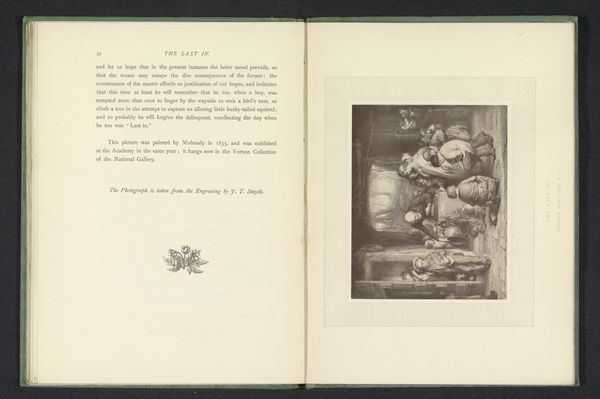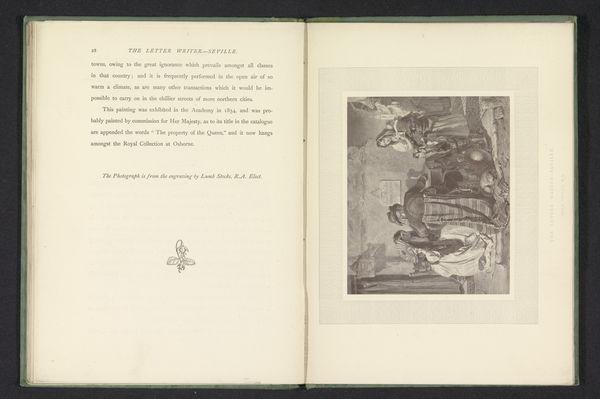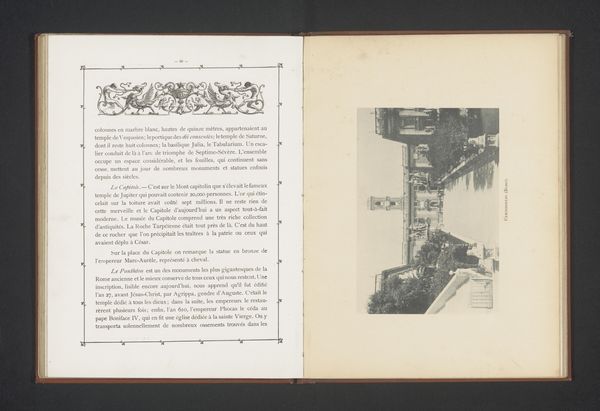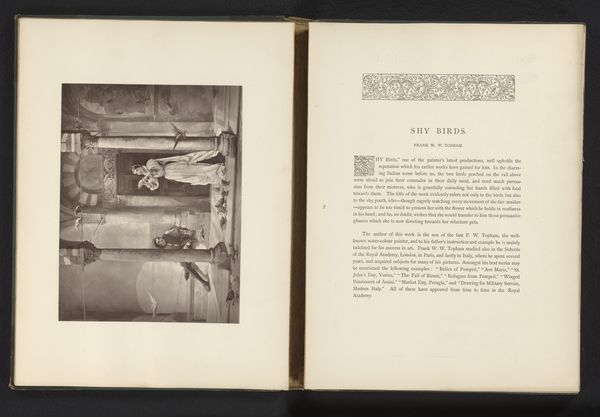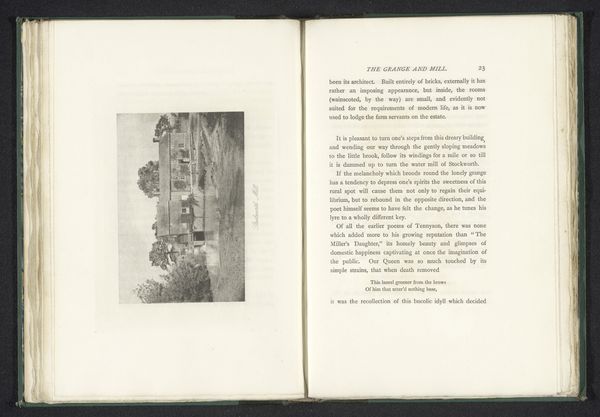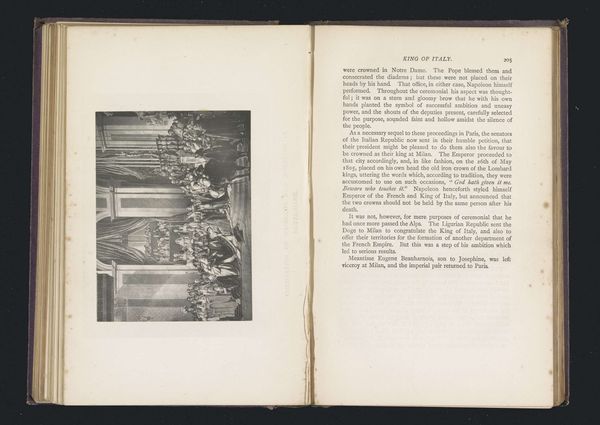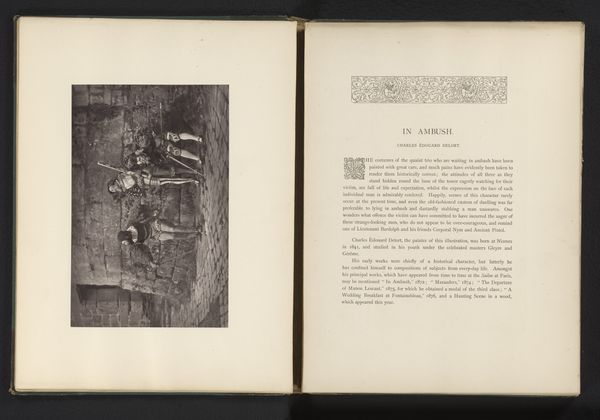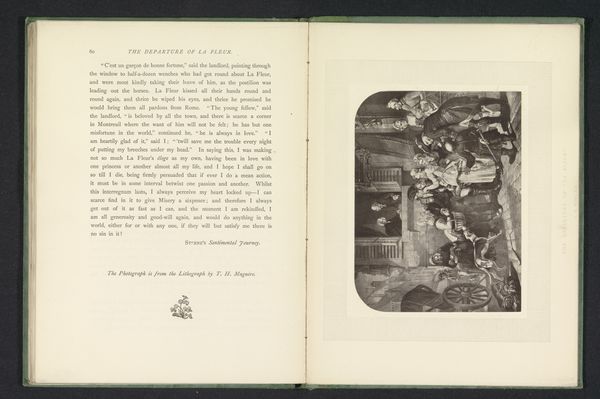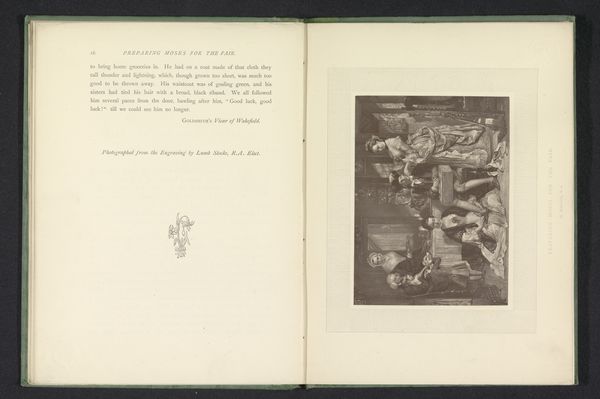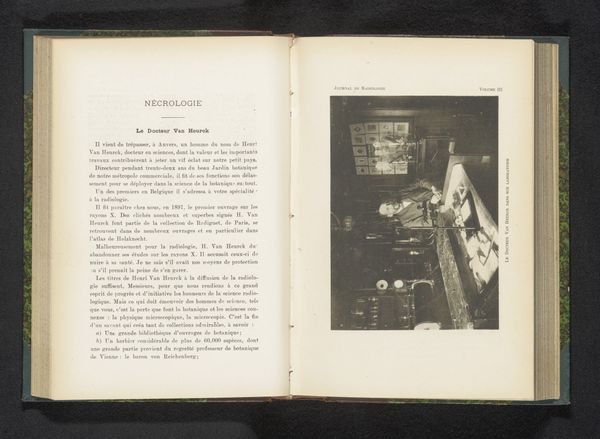
Fotoreproductie van een schilderij van kinderen die kijken naar een speelgoedboot in een tobbe door Thomas Webster before 1873
0:00
0:00
#
script typeface
#
aged paper
#
homemade paper
#
script typography
#
sketch book
#
hand drawn type
#
personal journal design
#
personal sketchbook
#
thick font
#
historical font
Dimensions: height 106 mm, width 169 mm
Copyright: Rijks Museum: Open Domain
Curator: This is a photographic reproduction of a painting titled "Children Watching a Toy Boat in a Tub" by Thomas Webster, made sometime before 1873. Editor: It's amazing, this monochrome world within a book. I'm immediately drawn into the children's fascination, this contained moment of joy amidst the mundane. There’s something so intimate about it, like stumbling upon a cherished memory. Curator: Intimacy is key. The image is presented within the pages of a sketchbook or journal. The page opposite includes typeset text that contextualizes the original painting, grounding the work in both a material reality, and an artistic and historical framework. The presence of text lends it scholarly weight. Editor: And a poignant layer, perhaps, hinting at lost histories. Look at the faces—they are filled with pure, childlike wonder. And that tiny boat, sailing in its humble sea. One can imagine it as a vessel of grand adventures. I wonder about that feeling: is it better expressed through an image in monochrome? Or color? Curator: Colour would provide additional historical and textural details about the artist's intentions, and painting materials. Yet here, this muted presentation, allows for contemplation through time. These documents and art objects often circulated across great distances and diverse audiences. Their accessibility lies in this reproducibility. Editor: Reproducibility for all, and for those across time as well! Looking at this, it makes me think of childhood itself: a fleeting, black-and-white dream, constantly being reimagined through memory and art. It invites you to linger, doesn't it? To dwell on simple joys. Curator: Indeed, a testament to art's enduring capacity to transport us, to evoke nostalgia, and to democratize art's influence.
Comments
No comments
Be the first to comment and join the conversation on the ultimate creative platform.
